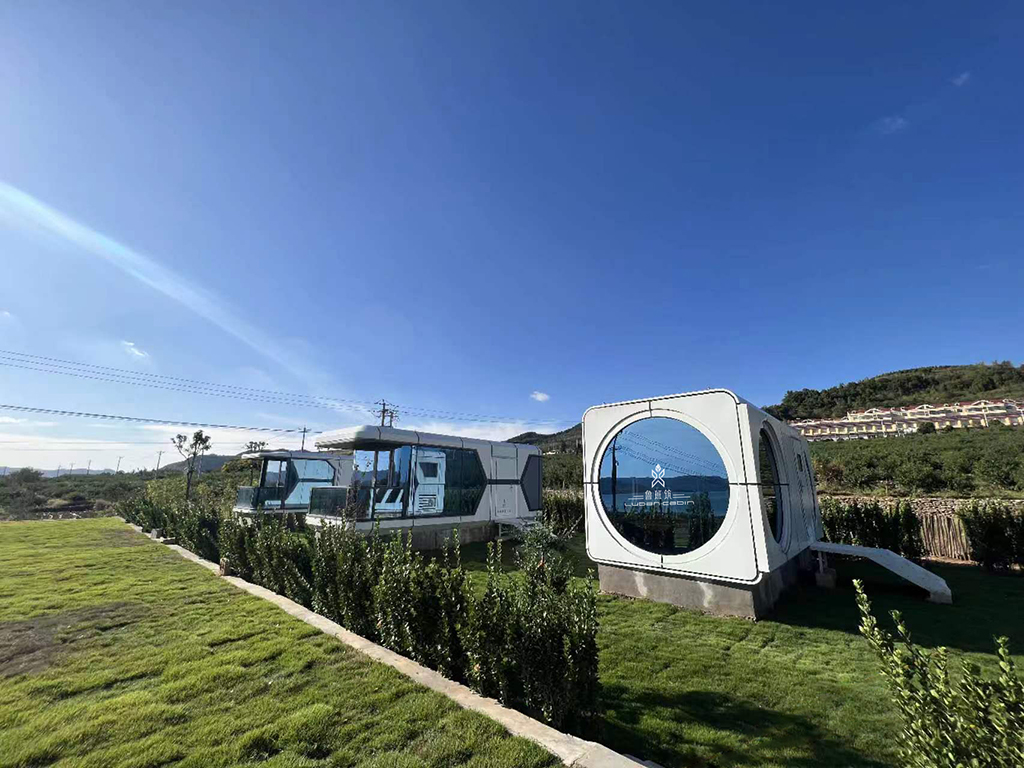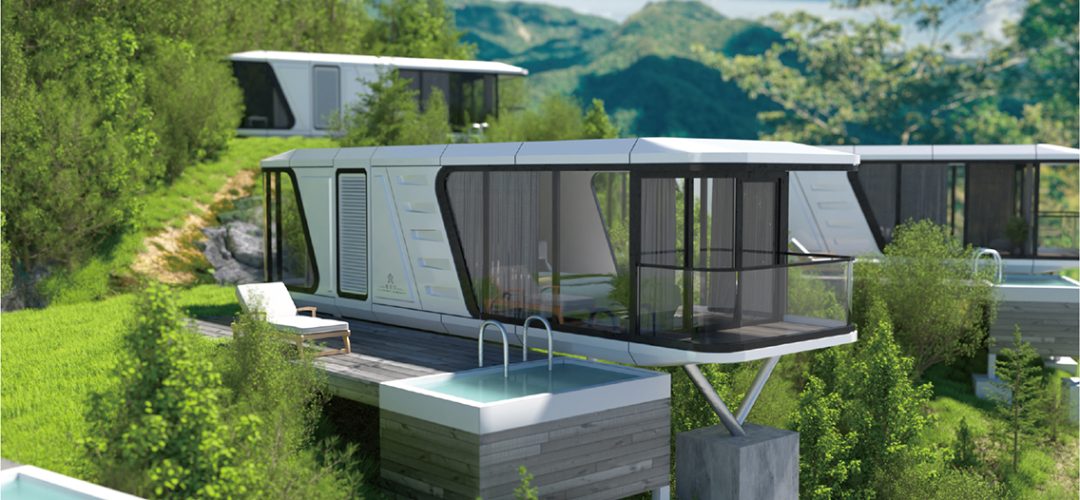Space capsule homestays are gaining popularity as futuristic, sustainable, and cost-effective accommodations for travelers. But one of the most common concerns for potential investors and operators is: Are these capsule structures durable? How long do they last? What kind of maintenance do they require?
Unlike traditional buildings, capsule homestays are made from high-tech materials that are lightweight yet strong, designed to withstand various environmental conditions. In this guide, we’ll explore the lifespan, maintenance, and care required to keep your space capsule homestay in top condition.
Table of Contents

1. What Determines the Lifespan of a Space Capsule Homestay?
The durability of a space capsule homestay depends on multiple factors, including materials, climate conditions, and maintenance efforts.
Materials Matter: Built for Strength
High-quality capsule homestays are typically constructed using:
Fiberglass-Reinforced Plastic (FRP): Lightweight, corrosion-resistant, and strong.
Aluminum Alloy Frames: Offers excellent structural integrity while being rust-resistant.
SPC & WPC Flooring: Waterproof and durable materials that withstand heavy use.
Tempered Glass Windows: Designed for safety, impact resistance, and insulation.
These materials ensure that a well-maintained capsule homestay can last 15-30 years or more.
Weather Resistance: Can Capsules Withstand Extreme Conditions?
Capsule homestays are designed to endure a variety of climates, but their longevity is affected by:
Humidity & Rain: Capsules with proper sealing and ventilation resist mold and water damage.
High Temperatures: Materials like FRP and aluminum help withstand heat but require UV protection in extreme sun exposure.
- Cold & Snow: Capsules with proper insulation can handle low temperatures, but snow accumulation on the roof should be managed.
Strong Winds & Storms: Capsules are typically anchored securely to the ground, making them resistant to moderate storms. However, areas prone to hurricanes may require additional reinforcement.
Structural Stability: Do They Weaken Over Time?
Unlike traditional wooden structures that may rot, capsule homestays made from high-performance composite materials do not degrade as quickly. However, regular inspections of joints, fasteners, and anchor points ensure long-term stability.
2. Essential Maintenance: How to Extend the Lifespan of a Capsule Homestay
Proper maintenance is key to ensuring your capsule homestay remains in excellent condition for decades. Here’s what to focus on:
Exterior Care: Keeping the Shell Strong
- Regular Cleaning: Wash the exterior with mild detergent every 3-6 months to remove dirt and pollutants.
- Inspect for Cracks & Wear: Small cracks or scratches in the FRP shell should be repaired immediately to prevent water infiltration.
Reapply Protective Coatings: UV-resistant coatings should be reapplied every 3-5 years in sun-exposed areas.
Interior Maintenance: Ensuring Guest Comfort
- Ventilation & Humidity Control: Use dehumidifiers or air circulation systems in humid regions to prevent mold growth.
- Flooring Upkeep: SPC and WPC flooring require minimal maintenance—just regular cleaning and avoiding heavy impact damage.
Seals & Insulation Checks: Inspect window and door seals annually to maintain energy efficiency.
Electrical & Plumbing Systems: Preventive Care
- Check Wiring & Outlets: Ensure safe operation by inspecting electrical connections every 6-12 months.
- Waterproofing Plumbing Connections: Since capsule homestays do not have built-in water tanks, inspect external water connections for leaks or blockages.
Greywater Management: If using a greywater recycling system, clean and maintain filters regularly.
3. Common Issues & How to Solve Them
Issue 1: Condensation Inside the Capsule
Cause: Poor ventilation or extreme temperature differences.
Solution: Install ventilation fans, dehumidifiers, or double-glazed windows to minimize condensation.
Issue 2: Minor Cracks or Surface Damage
Cause: Impact from heavy objects or prolonged sun exposure.
Solution: Use FRP repair kits for minor cracks and reapply a protective coating for UV resistance.
Issue 3: Fading Exterior Color
Cause: Sun exposure over time.
Solution: Apply UV-resistant paint or coatings every few years to maintain appearance.
Issue 4: Door & Window Seal Deterioration
Cause: Natural aging or prolonged exposure to moisture.
Solution: Replace seals every 5-7 years and ensure proper weatherproofing.
4. Cost of Maintenance: Is It Expensive?
One of the advantages of capsule homestays is low maintenance costs compared to traditional buildings. Here’s an estimated breakdown:
Maintenance Task | Frequency | Estimated Cost (USD) |
Exterior cleaning | 3-6 months | $50-$150 per session |
Seal & insulation check | Annually | $100-$300 |
Electrical system check | Annually | $100-$500 |
Plumbing inspection | Annually | $100-$400 |
Recoating for UV protection | Every 3-5 years | $500-$1,500 |
Flooring replacement (if needed) | 10+ years | $2,000+ |
Compared to traditional homes or hotels, capsule homestays require fewer repairs, less maintenance, and lower operational costs in the long run.

5. Final Verdict: Are Capsule Homestays Durable or Fragile?
Durable if well-maintained, using high-quality FRP, aluminum, and weatherproof materials.
Low maintenance compared to traditional buildings, but regular cleaning, inspections, and minor repairs are necessary.
Resistant to most weather conditions, but additional reinforcements may be required for extreme climates.
Long-lasting investment with a lifespan of 15-30 years, depending on care and location.
Bottom Line: With proper maintenance and the right setup, a space capsule homestay can be a long-lasting, cost-effective, and innovative hospitality solution. Whether placed in an urban setting or a remote nature retreat, these futuristic accommodations are built to withstand the test of time.
Thinking about setting up a space capsule homestay? With the right maintenance plan, your investment can provide unique and unforgettable stays for years to come!
WOULD YOU LIKE MORE INFORMATION?
Please contact us
